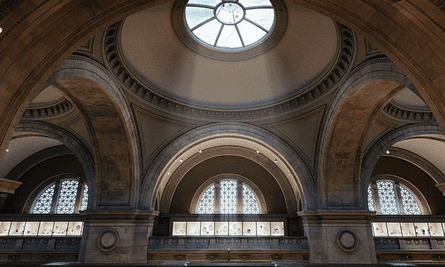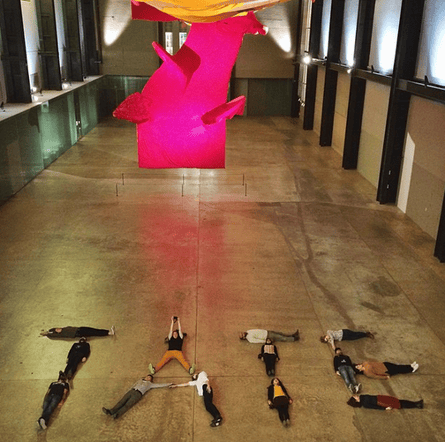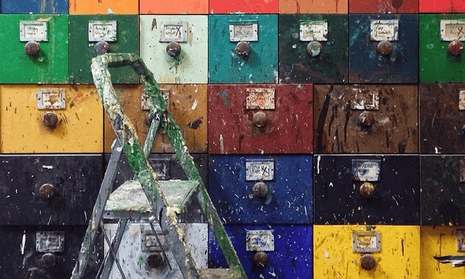When Dolly Brown, or @londonlivingdoll as she’s known on Instagram, first spotted the hashtag #emptymet and its accompanying, captivating images of a deserted Metropolitan Museum in NYC, she was intrigued.
Pioneered by American Instagrammer Dave Krugman, the #empty movement began in 2013 when New York’s Metropolitan Museum of Art gave him access to the building after it had closed to the public. He invited other Instagrammers, and together they began to take – and share – photographs of the Met’s famous spaces, transformed out of hours by the absence of the general public.

Krugman knew that great work would come from the Met opening its doors to a new generation of tech-savvy photographers.
“I saw a beautiful symbiosis where the museum would get publicity, and the photographers would have unprecedented access to one of the world’s top museums. After seeing the first batch of work, I knew my instincts were right.”
Sure enough, from Krugman’s first #empty event came not only a huge increase in Instagram followers for the Met, but other similar events in the US and across Europe.
Inspired by the #emptymet images, Brown thought immediately of the Royal Opera House in London. A devotee of the institution, she wanted an inside view of a place in which she’d invested a lot of time, money and emotion. But like Krugman and the Met, she also felt that there was something in it for the Royal Opera House.
Brown sent an unsolicited email via the Royal Opera House website proposing an #empty event and got a reply two hours later. While they saw the possibilities in such an event, there were initial reservations about calling it #emptyROH because it isn’t ever completely empty.

“But the #empty movement is not that literal: it’s about linking social media to cultural institutions and providing access and insight to a younger audience who might otherwise not go to these places,” Brown explains.
London Instagrammer Zoe Timmers (@zobolondon) had also discovered the #emptymet hashtag and contacted Krugman to talk about how it could work elsewhere. For Timmers, Instagram is a community of creative people.
“The #empty movement seemed like the perfect extension of that. Allowing Instagrammers to gain rare access to these spaces gives them the chance to push their creative boundaries and give the institution some great shots. There’s also something magical about exploring a public-free space.”
Brown invited 10 Instagrammers to take part in #emptyROH early one morning in September 2014, followed by Timmers’ #emptytate at the Tate Modern the following month.

“We really got a sense of what the Royal Opera House does,” Brown says. “We saw the costumes for the upcoming run of Manon, cherry blossoms for Madame Butterfly in the props department and even the Royal Ballet’s morning dance class – something very few members of the public are ever privy to. The first of the 85 images on Instagram with the #emptyROH hashtag wasn’t taken by one of the visitors, it was a picture a dancer had taken of us. It was a great meta-moment.”
Timmers’ #emptytate event coincided with the opening of the latest large installation in the Turbine Hall by Richard Tuttle, but the group were also given the chance to explore elsewhere. “As we wandered excitedly around the empty galleries we realised that we were creating our own little bit of art. When there are crowds of people within a space its architecture and beauty can often be overlooked. With nobody there, we had a real sense of creative freedom and I think that comes across in the images.”
What makes the #empty movement unique is the way it makes art, particularly for younger people, more accessible. Brown feels that it is movements like #empty that set Instagram apart from other social media platforms. “Instagram creates real-life connections out of the virtual, whereas Facebook, for example, takes real-life connections and tries, I think many would say unsuccessfully, to import them into the virtual world. The visual aspect of Instagram makes it possible for people to interact in a more meaningful way.”
So what does Krugman think about seeing his movement spreading beyond the walls of the Met? “It has been one of the greatest pleasures of my life. I always hoped that the idea would catch on, because I think it’s one of those unique, mutually beneficial situations, where the only byproduct is incredible creative output and awareness of the arts. It’s been so much fun to watch, and an honour play a role.”
Where next? Timmers’ tip is the British Museum, which is keen to take part – while at the top of Brown’s wishlist were the Royal Opera House and the Barbican, and she’s ticked one of those off already. Watch this (empty) space.

Comments (…)
Sign in or create your Guardian account to join the discussion